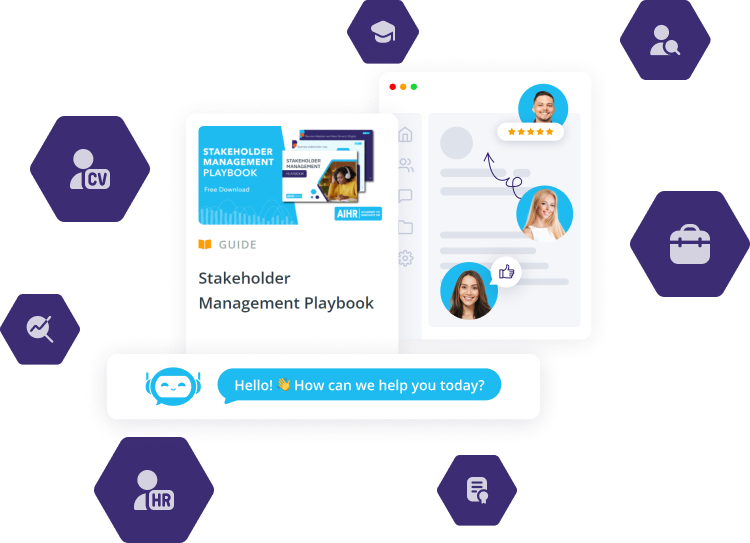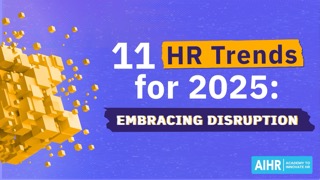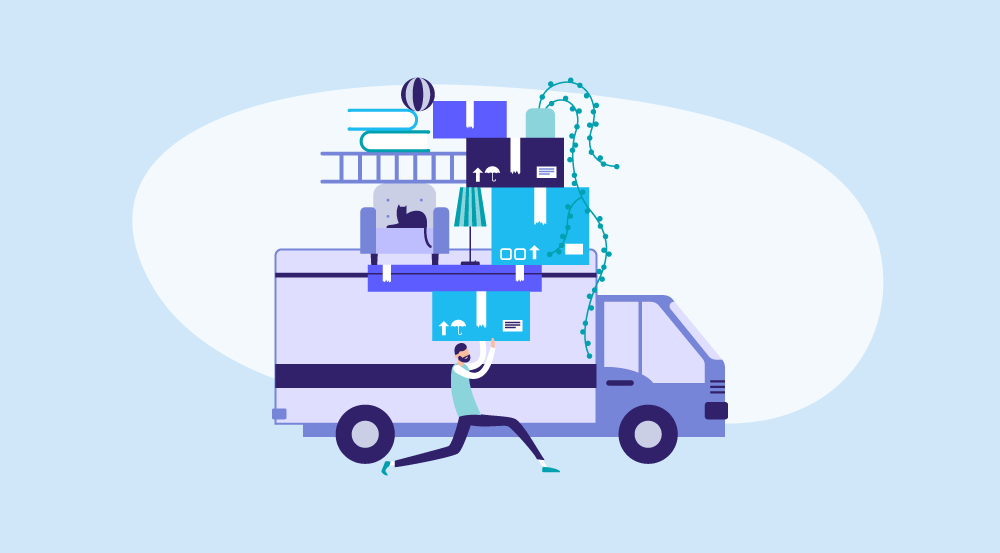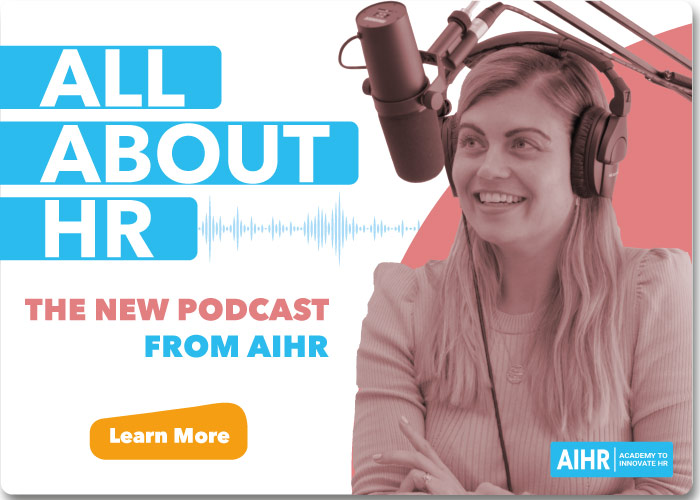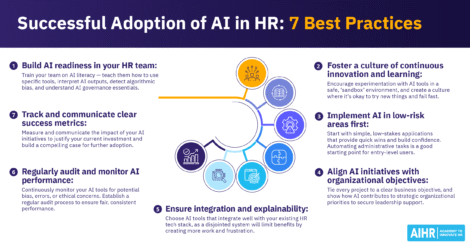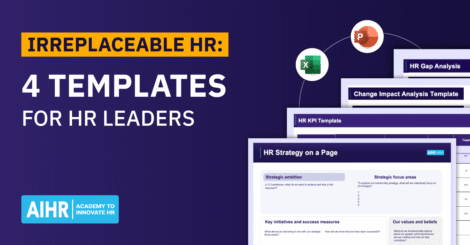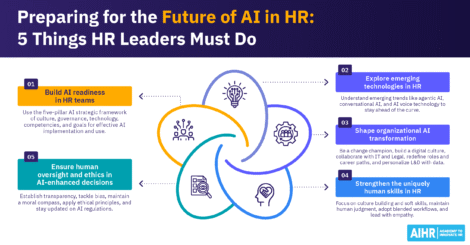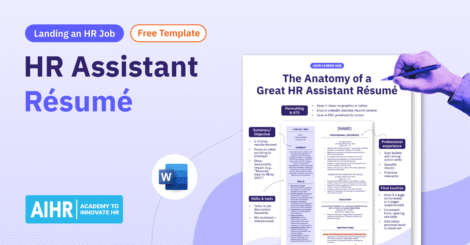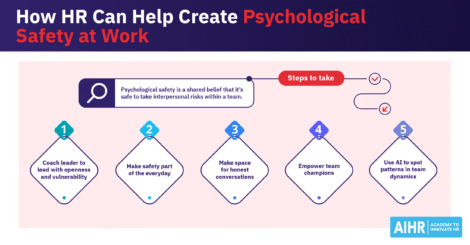HR service delivery is about more than handling paperwork or routine queries. It plays a critical role in organizational efficiency and shapes how employees view the value and purpose of HR. When people can’t get timely answers or support from HR, it affects how they see the company overall.
In fact, a recent industry survey found that nearly two-thirds of organizations that optimized their HR service delivery saw measurable improvements in employee experience.
As HR continues to manage process inefficiencies, compliance requirements, and the need for consistent support across locations, rethinking service delivery helps align HR with business goals and supports a more responsive workforce.
So, how can HR structure its service delivery to be more efficient and employee-friendly? Let’s start with the basics.
Contents
What is HR service delivery?
HR service delivery models
Benefits of HR service delivery
Examples of HR service delivery
Best HR service delivery software
HR service delivery best practices
What is HR service delivery?
HR service delivery is the system behind how an organization provides core HR services. These include onboarding, payroll, benefits, employee relations, and other support functions. It includes the people, technology, and processes that make HR operations work consistently, accurately, and in line with legal and internal standards.
Just as companies aim to deliver a smooth customer experience, HR should focus on delivering a smooth employee experience. Whether someone is onboarding or seeking help with benefits, the way HR delivers that service shapes their overall perception of the company.
To evaluate how effective your HR service delivery is, consider tracking the following metrics:
- HR service response time: Average time spent on fulfilling employee requests or queries.
- Cost of HR per employee: Total HR operations cost divided by the number of employees.
- Time to onboard: Average time to onboard new hires.
- Time to full productivity: Average time it takes new hires to reach expected performance levels.
- HR software participation rate: The percentage of employees engaging with digital HR systems.
- Employee satisfaction with HR services: Average feedback scores from satisfaction surveys.
- Ratio of HR professionals to employees: The number of HR staff in relation to the overall workforce.
HR service delivery models
Human Resources service delivery models are the framework for structuring and providing HR functions and services. Each organization must decide which model best suits its size, business needs, technological capabilities, and geographic spread.
Here are the main types of HR service delivery models:
Centralized vs. decentralized models
Traditionally, centralized and decentralized have been the two methods of HR service delivery.
In a centralized HR service delivery, all HR functions are managed by a consolidated HR team that services the entire organization. The centralized model aims to promote efficiency, consistency, standardization, and strategic alignment. It also reduces administrative and overhead costs. However, there is the potential for a lack of responsiveness to individual business unit situations and requirements.
In contrast, a decentralized HR service delivery allows different departments, locations, or business units to manage their own HR processes independently. The decentralized model allows for greater flexibility and the ability to consider local relevance and customize services according to the site’s specific needs. However, it can result in inconsistency and higher costs due to duplicated HR efforts throughout the organization.
Ulrich model
The Ulrich model, developed by Dave Ulrich in the mid-1990s, is one of the most widely adopted frameworks for HR service delivery. Often described as a “three-legged stool,” this centralized HR service delivery model separates HR into three specialized functions, supported by a strategic leadership layer:
At the top of the stools is a small corporate leadership team that oversees the entire HR operation and provides strategic direction to the three legs of the stool, described as:
- Shared Services Centers: This centralized team is the first point of contact for employees and managers. It handles the high-volume transactional tasks and basic support functions, such as payroll, benefits, and onboarding. Employees access this via phones and online portals.
- HR Business Partners: These strategic HR professionals consult directly with business-unit managers on people issues that affect the business’s bottom line. This can include designing plans and programs for handling recruitment, succession planning, etc. They also ensure that HR strategies are aligned with overall business objectives.
- Centers of Excellence (CoEs): CoEs are staffed by subject matter experts who support both HRBPs and Shared Services teams. They focus on complex or specialized areas such as compensation, performance management, learning and development, and organizational design.
By separating strategic and operational HR service delivery roles and responsibilities, this model allows HR teams to take on a more consultative function and participate in driving business success.
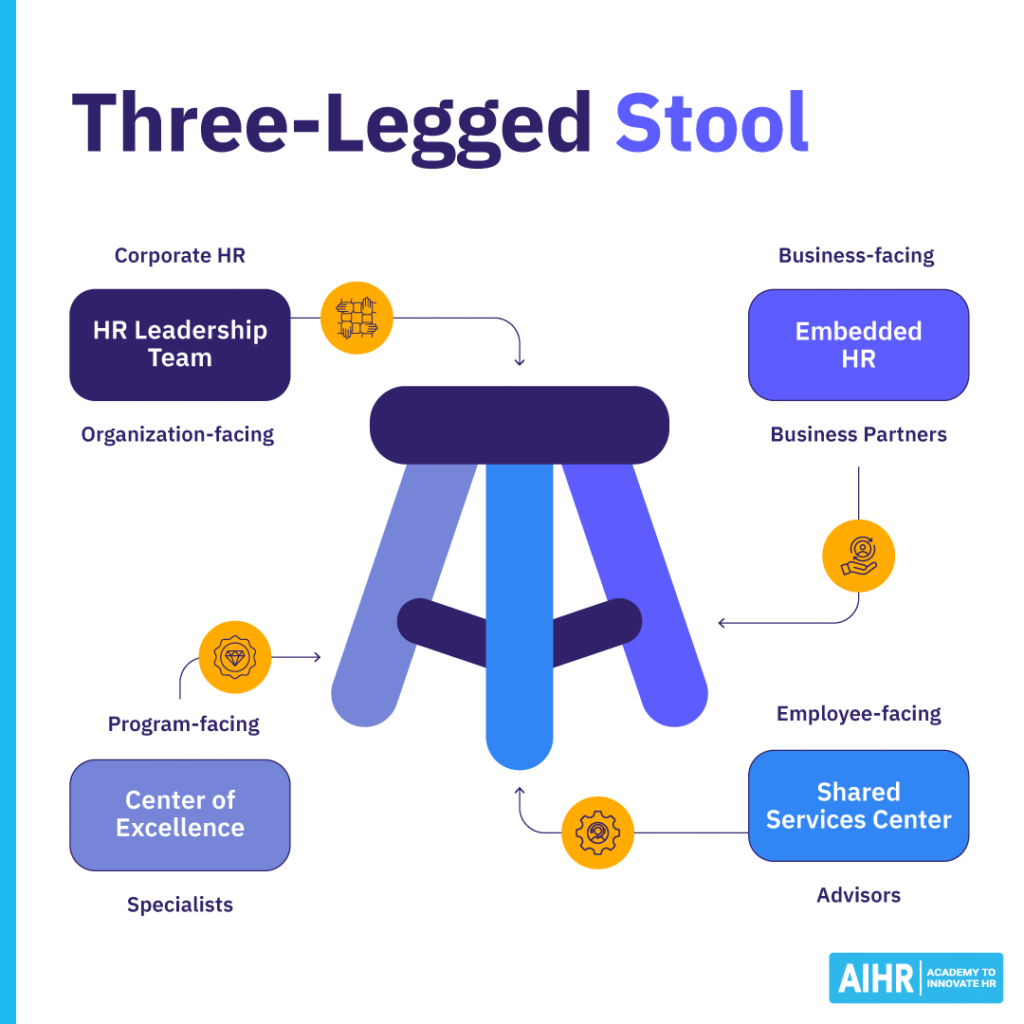
Tiered service model
The tiered service model, which builds on the Ulrich framework, structures HR support into levels based on the complexity of the issue. It ensures that the right expertise is applied at the right time:
- Tier 0: Self-service tools allow employees and managers to find information or resolve issues independently, often through digital platforms or knowledge bases.
- Tier 1: When self-service doesn’t resolve the issue, employees can submit a request to the HR Shared Services team. These representatives handle straightforward inquiries or provide guidance using pre-established resources.
- Tier 2: More complex cases are escalated to HR specialists with deeper expertise in specific areas such as compensation, benefits, or labor law.
- Tier 3: This level involves strategic HR professionals who handle sensitive or high-impact issues such as legal disputes, senior-level interventions, or employee relations matters.
Many organizations are adopting this layered approach to streamline service, reduce costs, and improve the consistency of HR support. It also allows HR to take full advantage of technology to handle routine tasks while focusing human expertise where it’s most needed.
Hybrid model
The hybrid model combines centralized and decentralized HR service delivery. This means that certain HR functions, such as payroll, compliance, and benefits administration, are consolidated and managed by a centralized HR team. Other functions, such as training and performance management, are managed at the department, business unit, or geographic location level.
This structure gives organizations the benefit of standardization and efficiency in foundational HR areas, while also offering localized support tailored to specific workforce needs. It’s particularly effective in large, complex organizations where one-size-fits-all approaches may not be practical.
To implement a hybrid model successfully, organizations need strong coordination and dependable HR technology to ensure seamless communication between central and local teams.
Outsourced model
In the outsourced model, an organization contracts external providers to manage specific HR services. Commonly outsourced functions include payroll, recruitment, benefits administration, and training.
Outsourcing can offer several advantages, such as cost savings, access to specialized expertise, and scalability during periods of growth or change. However, it can also introduce challenges, such as reduced control over service quality, dependency on vendor performance, and potential impacts on company culture and employee trust.
Benefits of HR service delivery
As digital transformation reshapes the workplace, employees expect a more responsive, user-friendly experience when interacting with HR. Optimizing HR service delivery helps meet these expectations and brings a range of organizational benefits:
- Greater cost-efficiency: Modern HR technology and shared services boost efficiency while keeping costs down. By streamlining tasks and reducing duplicated efforts, HR teams can respond more quickly to employee needs. Self-service systems reduce the volume of routine inquiries, while standardized processes help avoid compliance issues, reduce confusion, and minimize legal risk
A tiered HR service delivery model also matches specific skillsets and salaries with correlated work. For example, entry-level HR staff handle administrative tasks, leaving higher-level HR professionals with specialized training to cope with more in-depth situations. - More strategic HR contribution: When service delivery is well-structured, HR teams spend less time on repetitive admin and more time supporting business goals. This enables HR to shift from a reactive function to a proactive, strategic partner, designing initiatives that support organizational growth and future readiness.
- Improved employee productivity: Automated systems, such as email, phone communication, and online portals, that route requests to the appropriate HR staff streamline workflows. This empowers frontline HR to accomplish more tasks and answer more requests. The ability to monitor interactions also keeps cases on track with metrics. Furthermore, employees who seek HR services also get what they need quickly with less downtime from their own work.
- Better data and reporting capabilities: Modern HR service delivery platforms generate useful data across all HR functions. These analytics allow HR to monitor service performance, identify bottlenecks, and make evidence-based decisions to improve internal processes.
- A more personalized employee experience: Managers and employees want quick, one-stop shopping for answers to their questions and need pertinent, targeted information. Providing employees with accurate, consistent information and transparency in the status of their cases builds their trust in the company for stronger employee engagement.
- Stronger employee experience overall: HR service delivery touches every stage of the employee life cycle. By aligning service quality with employee expectations, especially when it mirrors the convenience and immediacy of consumer tech, organizations can deliver the kind of experience today’s workers value most.
Employees don’t just want answers; they want clarity, consistency, and support they can count on. A strong HR service delivery model isn’t just about efficiency; it’s essential to the employee experience and HR’s strategic impact.
With AIHR for Business, your HR team can:
✅ Design and optimize service delivery models that align with business and workforce needs
✅ Build practical skills in areas like employee experience, digital HR, and process design
✅ Deliver consistent, scalable HR support across locations, teams, and roles
✅ Free up HR’s time to focus on transformation, not just transactions.
🎯 Build an HR service experience your people can trust and your business can grow on.
Examples of HR service delivery
Technology and process innovation have progressed HR service delivery to be more efficient, strategic, and suited to a better employee experience.
Here are three examples to illustrate what modern HR service delivery looks like in action:
- Employee self-service portals: Mobile apps and online HR platforms let employees handle routine tasks themselves, like downloading payslips, updating personal details, or enrolling in benefits programs. This convenience reduces HR’s administrative load and gives employees on-demand access to the tools they need.
- Automated help desk with an AI chatbot: An AI-powered HR chatbot provides real-time answers to frequently asked questions about policies, benefits, and leave entitlements. The bot recognizes more complex issues and automatically routes them to the appropriate human HR contact. This tool supports consistency, keeps response times short, and frees up HR staff for more consequential duties.
- Streamlined onboarding and offboarding: Digital workflows and automated checklists manage the process of assimilating new hires and ensuring a secure exit for departing employees. Tasks such as account setup/cancellation, paperwork, training access, equipment allocation/revocation, and exit interviews are managed automatically for greater efficiency and assured completion and compliance. This method saves time, minimizes errors and security risks, and provides smoother experiences for first-time and former employees.
HR tip
One online personal shopping service cut its hiring costs in half and reduced onboarding time by 80% after adopting a global recruitment platform. The investment in streamlined service delivery had a direct impact on both cost savings and hiring speed.
Best HR service delivery software
Many organizations turn to comprehensive HR service delivery platforms to keep HR operations smooth, scalable, and employee-focused. These tools automate key tasks across payroll, talent management, onboarding, and reporting, helping HR teams manage the full employee life cycle more efficiently.
Here we’ve listed three of the top HR service delivery software providers and what their platforms have to offer.
ServiceNow
Best for: Large enterprises with complex workflows
ServiceNow is a heavyweight among HR service delivery providers. This unified digital portal offers a full suite of tools that automate processes, streamline HR workflows, and integrate with other business systems.
Key features:
- Case and knowledge management with self-service options
- Centralized employee service center
- Automated onboarding and other employee life cycle events and transitions
- AI-powered categorization and routing of requests
- Personalized employee journey support.
Why it stands out: ServiceNow delivers a “consumer-grade” digital experience that scales well for global teams. It’s especially effective for organizations needing to standardize complex, cross-functional workflows.
UKG Pro
Best for: Medium to large organizations
UKG Pro is a comprehensive human capital management suite that incorporates core HR, payroll, timekeeping, talent management, and tax capabilities into one platform to support the entire employee life cycle.
Key features:
- Employee self-service portal
- Automated workflows for routine HR tasks
- In-depth reporting and real-time data insights
- User-friendly employee document manager
- Built-in global compliance features.
Why it stands out: UKG Pro is highly configurable, making it ideal for organizations with diverse workforce needs. Its unified architecture helps streamline operations while offering enough flexibility to adapt to regional or organizational differences.
Oracle Fusion Cloud HCM
Best for: Enterprise organizations
Oracle Fusion Cloud Human Capital Management platform plans, manages, and enhances global people processes from one common data source. Its AI-embedded infrastructure and configurable workflows offer seamless, personalized service to employees, managers, and HR teams.
Key features:
- Automated recruiting, onboarding, and succession planning
- Streamlined payroll processing, workforce management, and compensation and benefits administration
- Training, skills tracking, and development program integration with performance management
- Intuitive employee self-service portals
- Advanced analytics, predictive insights, and customizable dashboards
- Multiple currencies, languages, and localization capabilities.
Why it stands out: Oracle is recognized as a leader in enterprise HR solutions. Its platform offers deep functionality, scalability, and security, making it a strong choice for large global organizations looking to align HR processes with strategic business goals.
HR service delivery best practices
HR service delivery plays a big role in shaping how employees view your organization and experience your employer brand. Every interaction should leave people with a sense that their issue was handled fairly, efficiently, and with care. These best practices can help your team build a strong, scalable, and people-focused HR service experience:
1. Apply the What-Who-How framework
When planning your HR service delivery, look at the big picture before delving into the specifics. A helpful approach is to decide on the following three targets:
- What: What is the HR service we are offering, and what do we need to do it?
- Who: Who will be responsible for providing the service? What HR roles and skill sets are involved? Will new competencies need to be developed or hired?
- How: How will we deliver the service? What processes and technology will we need to accomplish this?
HR tip
Remember that your HR service delivery model must incorporate and support the organization’s priorities. Set goals that emphasize both HR and broader business strategies. For example, a fast-growing company’s main concern could be updating its recruitment and onboarding processes.
2. Implement the right technology
Technology sits at the center of effective HR service delivery. HR should be equipped with a service delivery platform designed to manage workflow with integration across functions and quickly resolve cases. It must also be user-friendly and personalized.
When employees use an online portal to search for policies or forms, they shouldn’t have to sort through information that isn’t relevant to them. Instead, the portal should direct them to what is appropriate for their role, location, and employment status.
Aim for cloud-based tech so that delivery is accessible and consistent. It should also meet employees’ standards for the same expedient technology interactions they have on a daily basis outside the workplace.
With the right tools, HR service delivery is more efficient and improves the digital employee experience.
HR tip
HR service delivery tools should be equipped with robust security measures, detailed audit trails, and compliance capabilities for all applicable local, regional, and national labor laws.
3. Enable on-demand employee self-service
Employees often prefer the ease of accessing information themselves for routine questions without having to connect to someone from the HR team. After all, it’s now second nature for us to type our inquiries into a search engine or AI chatbot and retrieve immediate answers.
Employees also want support to be available at their convenience. This can include when they’re away from work and beyond typical office hours. It is especially relevant for remote employees or those who travel.
HR service delivery with self-service technology accommodates these situations. For example, you can build an online knowledge base where employees can find answers to their questions and request PTO, etc. Chatbots are another advantageous option.

4. Have a scalable model in place
As your business changes over time, your HR service delivery model will need to adapt to remain consistent and reliable. To develop the components of your model, you’ll need a clear idea of the organization’s long-term growth goals.
In addition, it should be adaptable to meet different requirements when unplanned changes occur, so keep these questions in mind:
- Can this HR delivery system be scaled up quickly without a high cost?
- Can this HR delivery system be scaled down easily?
A centralized, multi-tiered HR service delivery system that uses technology to automate and organize workflows has the resources to absorb additional usage. As a result, it is more scalable than decentralized systems. This will help you provide excellent HR service even as your organization grows.
5. Don’t lose the human touch
Even though technology makes your work and your employees’ lives easier, don’t forget the importance of a personal touch. Employees may expect access to HR information at their fingertips. Yet, they still want the option of engaging with an actual person. There is no substitute for human interactions, and open communication is one facet of a satisfying employee experience.
Always provide employees with a way to contact an HR professional who can answer their questions and walk them through the intricate and sensitive issues they may have. When a case takes time to resolve, make sure employees have insight into the status of the steps you’re taking and know when they can expect an answer. Transparency in the process assures employees that their situation is being taken seriously and they are valued.
6. Invest in continuous improvement
Regularly review your HR service delivery model and platforms to assess whether they’re accommodating changing business needs. This allows you to identify problems and make adjustments. Factor in employee input by encouraging feedback through satisfaction rating features, pulse surveys, focus groups, and informal check-ins.
Also, keep HR staff updated on the latest technologies, regulations, and industry practices to ensure your HR service delivery remains current.
Over to you
HR service delivery is a core part of how HR supports the business, serves employees, and drives results. When it’s efficient, flexible, and aligned with your organizational goals, HR can focus less on chasing paperwork and more on strategic impact.
By choosing the right Human Resources service delivery model, investing in the right tools, and keeping people at the center, your HR team becomes a trusted partner in every stage of the employee journey.


